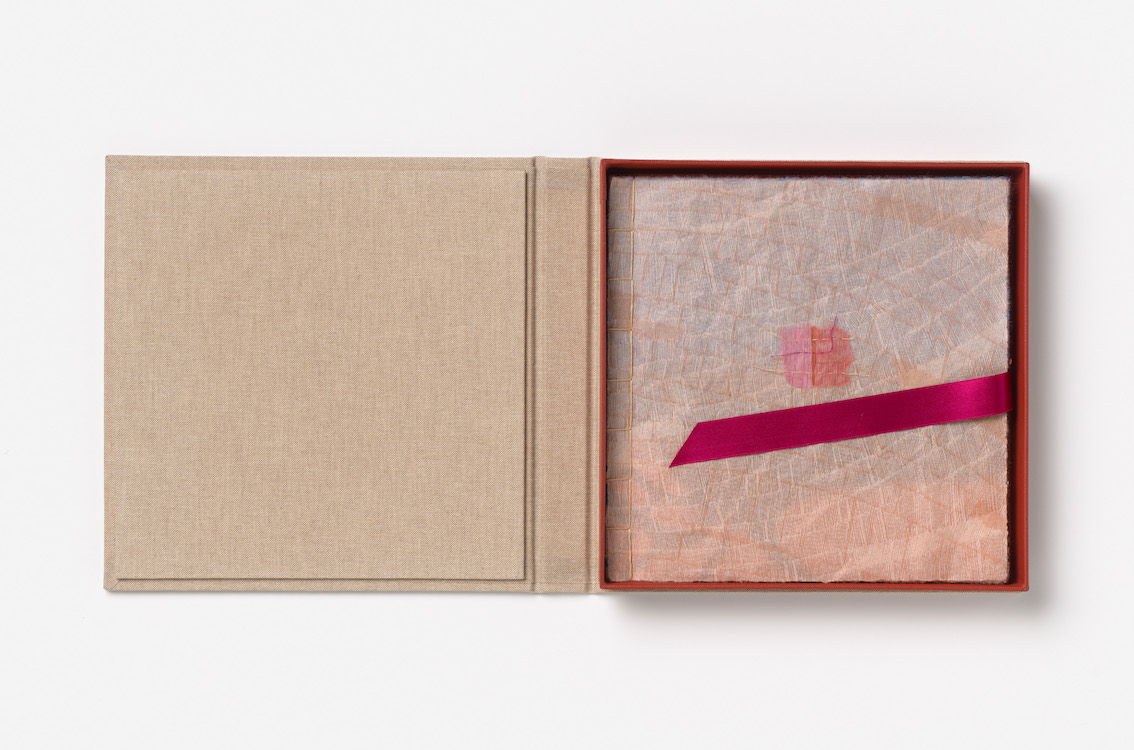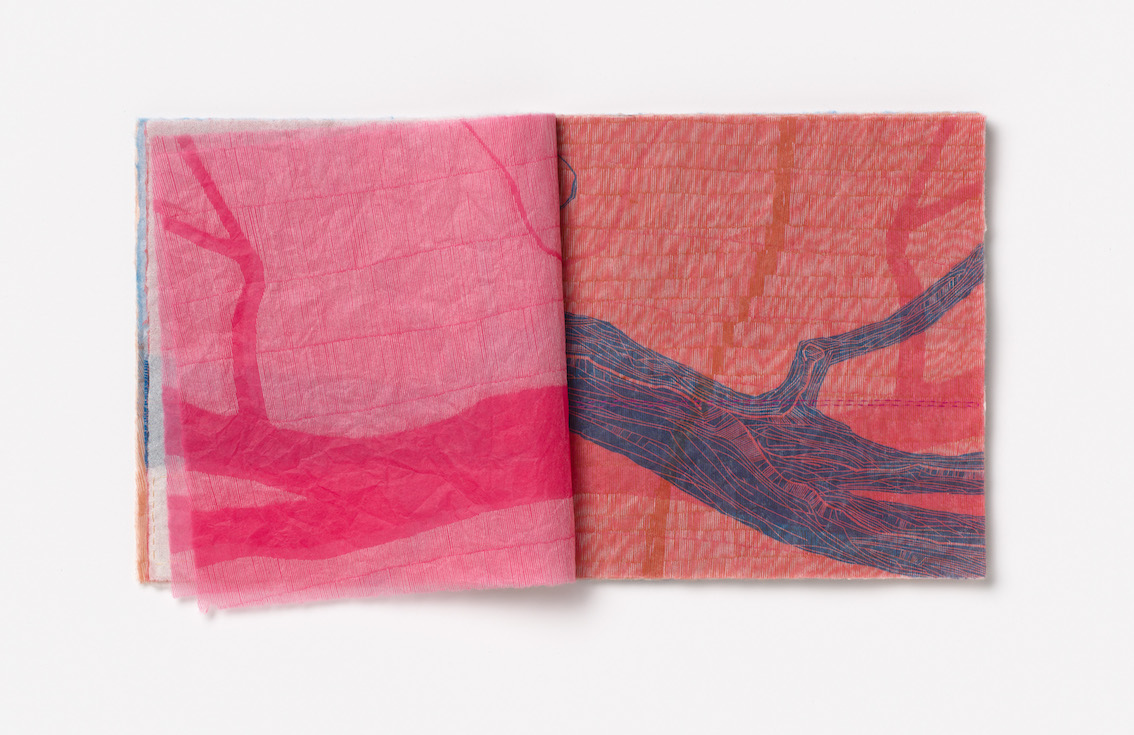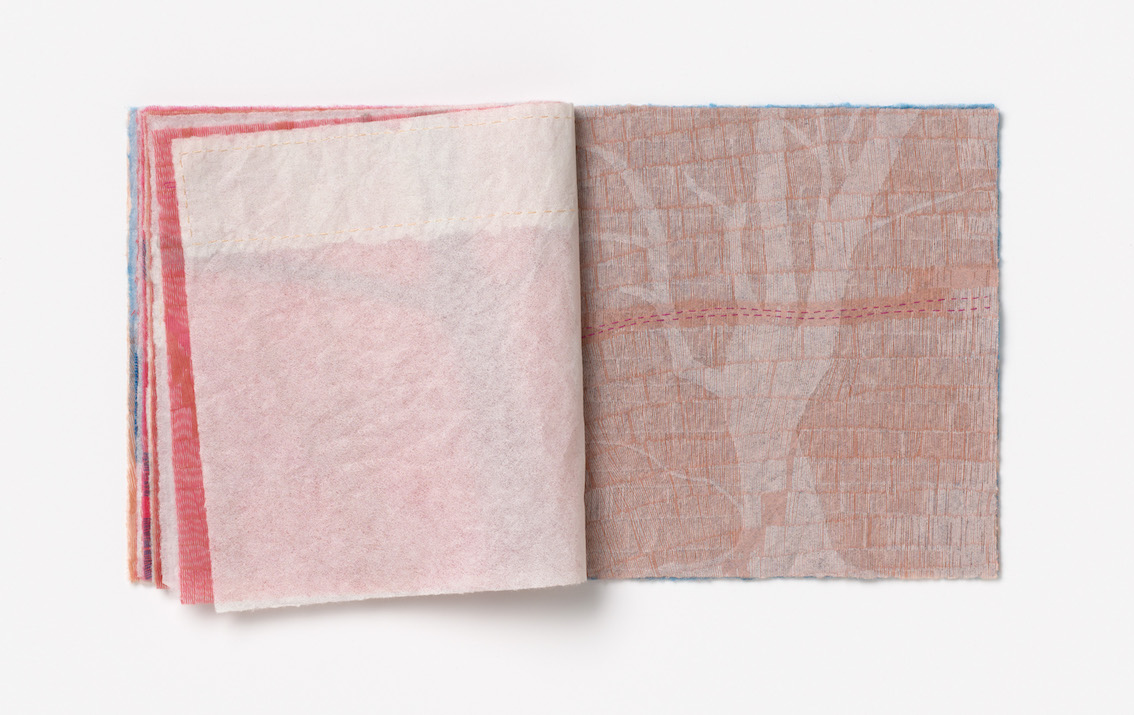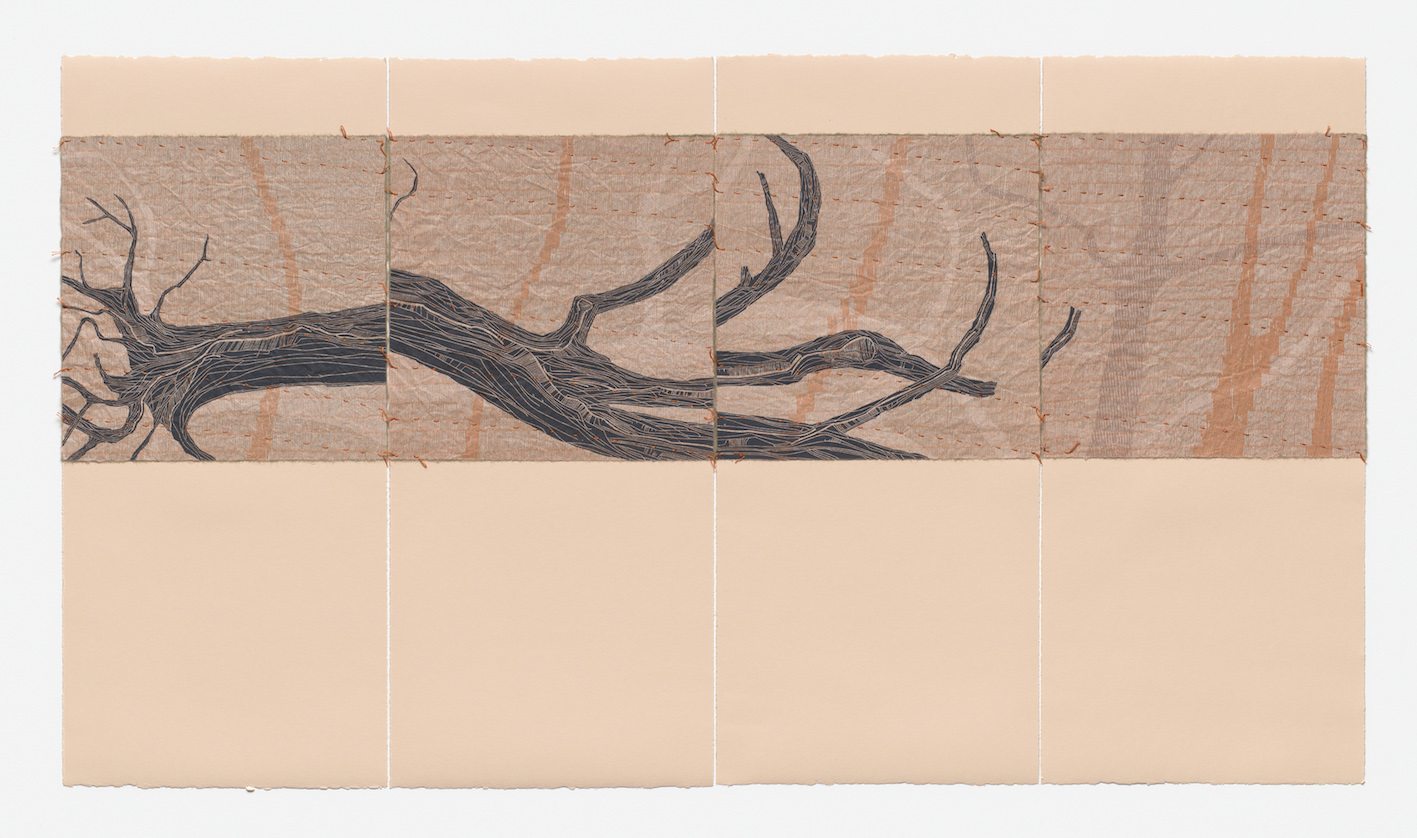


From top:
Photographs by Matthew Stanton
lacuna (letter 18), 2019, linocut, kozo tissue, thread, four panels, 56cm x 25cm each, edition of 5
lacuna (letter 18), 2020, linocut artist book, kozo tissue, thread, solander box enclosure, 25.5cm x 25.5cm x 1.5cm (book), 28cm x 28cm x 4cm (box), edition of 3
lacuna (letter 18), 2020, linocut artist book, kozo tissue, thread, 25.5cm x 25.5cm x 1.5cm, edition of 3
lacuna (letter 18), 2020, linocut artist book, kozo tissue, thread, 25.5cm x 25.5cm x 1.5cm, edition of 3
Q: What were some of the foundation ideas you began with when embarking on this exhibition project?
I regularly travel to South Australia to visit family and friends, and often stop at Lake Bonney/Nookamka, near Barmera. It is a hauntingly beautiful and ancient place, a lake and river with a sad history of mismanagement since colonisation. There is a melancholy calm amongst the hundreds of dead river gum trees; it is a place to reflect. A fallen tree once caught my eye, and it is featured in lacuna (letter 18), lying on its side, suggesting the form of a pleading hand.
Q: How did the artwork selection take place?
I wanted to make a work that was large enough to show detail in the tree and background, and in four panels to indicate a movement, to represent the act of falling. While I was drawing and carving the blocks for each panel, I realised I was using four colours, which led me to explore how that would translate into a book as well. I saw that I could use the form of the book to extend the narrative that already existed in the 2D work, to deconstruct the print and reconstruct the tree.
Q: How does the exhibition manifest – what do visitors experience?
The exhibition will be in the South Gallery at Stephen McLaughlan Gallery, the small space in the corner near the window. The four panels of the 2D work will be unframed on the table, for visitors to explore the detail in the fine linocut lines and stitching. The book, and the solander box I have made for it, will also be on the table. Books should be looked at and interacted with, so of course visitors will be able to look through the 22 tissue pages of lacuna (letter 18). Tengucho tissue is very strong, though only 9gsm, and I crumple the sheets before sewing them together, so it will be a very intimate and tactile experience.
Q: What are some of the key works and what subject matter do they deal with?
The book and the prints investigate the idea of a lacuna, a gap in a manuscript, a missing portion of a story. In the linocuts I have built layers of finely carved abstract text to create background tone. The spaces between the text become a shadow of the tree as it falls, more prominent in the brighter life-giving colours used in the book. The rebuilt tree is gradually mended so it can re-emerge in the book. Each panel of the falling tree is first shown as a separated reflected colour, and then white tree sections are gently stitched together to gradually reveal the standing tree. In my work, I have often referred to the themes of fragility, and the desire to mend and repair, and the paper itself is important to this, as well as the stitching. The paper has been made in Japan for hundreds of years, primarily for the use of repair, but its translucency and ethereal fabric-like texture continue to fascinate and inspire me. It also has a beautiful crispness when layered with water-based relief inks that are heavily laden with extender. That is why I like making books like this, and showing them in a gallery where visitors can look through them in a quiet, contemplative space. They can turn each crisp, crumpled page; see the same image and its layers from the front and the back. And in this case, see the repair of the lacuna, the gap in the story of the tree that looked like a pleading hand at the lake’s edge.
lacuna is at Stephen McLaughlan Gallery 1Level 8 Room 16 The Nicholas Building
37 Swanston Street Melbourne, 7 March-3 April stephenmclaughlangallery.com.au
—
Join the PCA and become a member. You’ll get the fine-art quarterly print magazine Imprint, free promotion of your exhibitions, discounts on art materials and a range of other exclusive benefits.





